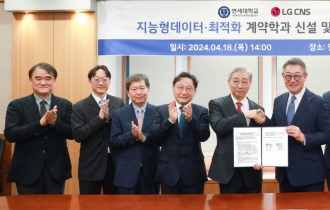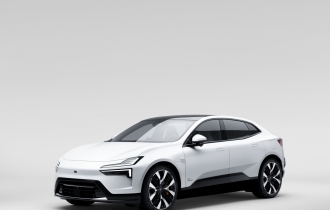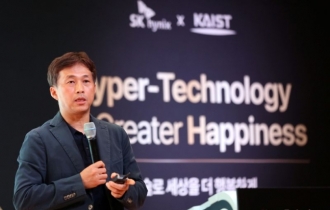How to keep use of steel in future cars
SONGDO, Incheon – As vehicles increasingly shift from gasoline to electric power, attention is turning to whether lighter materials such as carbon fiber reinforced polymers and aluminum will replace steel in car parts, frames and bodywork.
But South Korean steel giant Posco thinks there is hope for steel yet. It is aiming to keep carmaker clients by offering lighter but stronger kinds of steel. The strategy comes thanks to a highly engineered marketing solution devised by its research and development center in Songdo, Incheon.
Engineers at Posco R&D Global Center, said they are working with battery makers, parts makers and OEMs to test the use of steel in vehicle parts through computer-aided simulations. The simulation process also can be used to optimize manufacturing procedures and reduce manufacturing cost. A range of projects are being carried out to keep the material attractive in terms of strength and price.

Suspension parts prototype in use of giga steel
Cho Chung-un/The Korea Herald
Research projects are crucial for Posco’s automotive business. The South Korean steel giant provides roughly 10 percent of the world’s automotive steel. In 2017, Posco sold 9.1 million metric tons of steel for auto parts. Despite the growing popularity of aluminum, the steelmaker plans to sell 12 million tons of automotive steel by 2025.
“It is widely estimated that the weight of vehicles will go down further in order to deploy (heavier) batteries to travel further and make them more energy efficient, by replacing steel parts with aluminum,” said Lee Hong-woo, principal researcher at department materials forming research group of Posco’s R&D house. “Once the use of aluminum becomes popularized, it would be difficult to bring (carmakers) back to steel. Before that happens, we need to make a preemptive action by devising ways maximizing the use of giga steel in future vehicles.”
Giga steel refers to ultrahigh-tensile strength steel strong enough to endure pressure of 100 kilograms per square millimeter, or 1 gigapascal. As well as being stronger, it has better formality than other kinds of steel, meaning it can be made into a wider range of specific shapes.
Aluminum has better formality and is lighter than steel, but the material is not as strong as steel, Lee said, stressing the importance of passenger safety.
The latest achievement of Lee’s team includes a joint project with local car parts maker Austem on designing suspension parts partly with giga-grade steels for electric vehicles. The resulting prototype suspension parts is 20 percent lighter than those made using conventional steel, and stronger in stiffness.
“I think we have proven that the use of giga steel for EVs is marketable. The one-year project satisfied the level of stiffness targeted for mass production of EVs,” said Lee, showing a prototype of a suspension part made of giga grade steels.
“We have presented a realistic outcome for clients looking for lighter but stronger suspension parts. It is also applicable to regular cars.”
Lee’s team has also worked on making battery cases lighter for long-range EVs that run more than 400 kilometers per single charge. EVs that go 500-600 kilometers require heavier batteries. It is a mission for Posco engineers to find a technological breakthrough in developing lighter steel containers through the use of newly developed steel materials. The project was carried out with battery makers and carmakers, though the company refused to name the clients. Posco said it was open to new projects to provide customized products for carmakers around the world, which would reduce their research efforts in producing lighter but stronger cars for the future.
By Cho Chung-un/The Korea Herald (christory@heraldcorp.com)
EDITOR'S PICKS
- Seoul shares rattled by Israeli attack on Iran; Kospi dips to nearly 11-week low
- S-Oil donates W560m to support firefighters
- LG CNS teams up with Yonsei University to nurture AI specialists
- Polestar 4 to make Korean debut in June
- S. Korea pledges W23tr venture capital fund for green investment at G20 meeting
- Sungsimdang outperforms bakery giants to log sales over W100b
- France rejects opening Paris flight routes to T'way Air, deals blow to Korean Air merger
- SK hynix chief underscores chip cooperation between Korea, US















